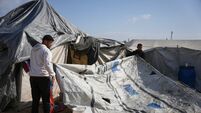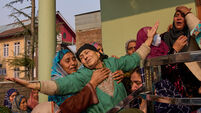Mobile records ‘could be better than census data’

They could even be used to help tackle crisis situations such as the spread of ebola, a report said.
A study by an international team, has found that maps made using mobile records are detailed, reliable and flexible enough to help inform infrastructure and emergency planners particularly in low-income countries, where recent population density information is often scarce.
Southampton geographer and senior author on the study, Dr Andy Tatem said: “It has many advantages over traditional census data. At the moment mapping of populations is constrained by the logistics of census surveys, which just provide a snapshot of population distributions every 10 years.
Dr Tatem said: “However, anonymous phone data can be examined regularly to map daily, at less cost and with greater flexibility.”
Mobile phone network subscription rates globally are now at 96% and “every time a person uses a mobile it sends information to a receiving tower and gives an approximate location of where they are,” he said.
The team, led by the Université Catholique de Louvain and the Université Libre de Bruxelles used the anonymised mobile phone records of 19 million users in Portugal and France, for several months in 2007 and 2008, to generate maps showing densities in different geographic areas.
These were found to be as accurate as traditional census-based maps, which the researchers generated from data from the National Institute of Statistics and Economic Studies of France and the National Institute of Statistics of Portugal.
Furthermore, by combining the mobile and census information with data from satellite imagery, the spatial resolution and accuracy of the census-based maps was greatly improved.
They have improved the targeting of malaria interventions by identifying communities most at risk. Most recently they have used mobile data to help inform authorities tracking and preparing for the spread of ebola in West Africa.
The paper Dynamic Population Mapping Using Mobile Phone Data is published in the journal Proceedings of the National Academy of Sciences.













